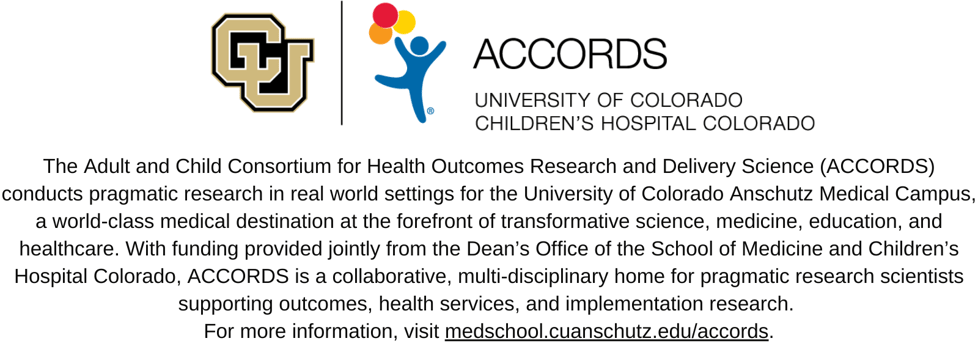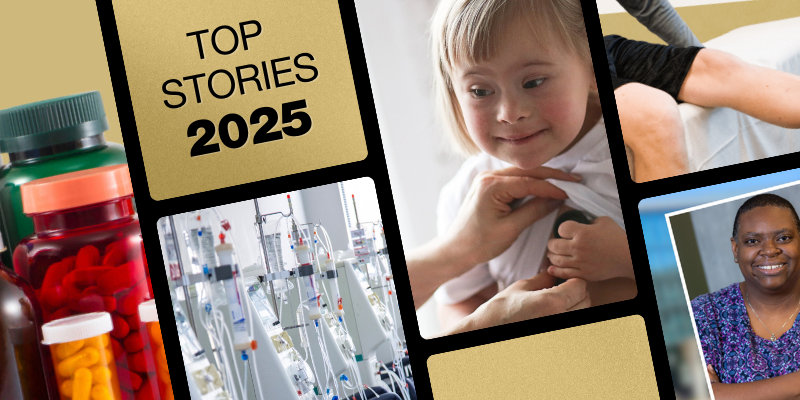In 2005, Dr. Stanley Szefler began a project in the way many ACCORDS members do—out of a desire to make research impactful. While working in pediatrics at National Jewish Health, Szefler felt there needed to be a program to give back to the community. “So often in research, we do studies and invite patients to participate, and they benefit from the studies… but I wanted to give something back to the community on a larger scale, which gave way to this idea,” says Szefler.
In partnership with the Colorado Department of Public Health and Environment (CDPHE), Szefler launched the Colorado Comprehensive School-Centered Asthma Program (AsthmaCOMP), a community-based participatory research program with the overarching goal of helping disadvantaged kids with uncontrolled asthma breathe better. AsthmaCOMP started with a 3-year funding schedule in Denver Public Schools and has continued to focus on elementary schools, where school nurses are fewer and there are higher rates of asthma exacerbations in children. The program is currently in its fifth cycle of funding and continues to innovate and improve.
“We learned a lot during the early years,” says Szefler. “We learned a lot about the community, about what school nurses see at their end, how to communicate medical information to parents and their health care providers, and what resources families need to take care of their child with asthma.”
AsthmaCOMP program
Currently, parents or guardians of elementary-aged school children fill out a health assessment before the beginning of each school year. This is standard protocol. Across Colorado, depending on the district, this assessment includes questions tailored to asthma. Has the child been diagnosed with asthma? How severe are their symptoms? How many times have they gone to the emergency room due to an asthma attack often associated with a viral respiratory infection? How many rounds of prednisone have they received as treatment? Have they been hospitalized for asthma in the past year?
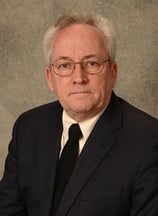
Stanley J. Szefler, MD |
Depending on the severity of the child’s asthma, the family may then be invited to participate in the AsthmaCOMP program. The National Institutes of Health (NIH) National Heart, Lung and Blood Institute (NHLBI) recently awarded an estimated 3-year, $2.7 million to the University of Colorado through its Disparities Elimination through Coordinated Interventions to Prevent and Control Heart and Lung Disease Risk (DECIPHeR) initiative to extend this program to five regions in the State of Colorado. This planning grant will be used to develop a 4-year clinical trial to test whether the program can be implemented in school districts outside the Denver area.
The Colorado DECIPHeR chapter is made up of team members from the Adult and Child Consortium for Health Outcomes Research and Delivery Science (ACCORDS), the Children’s Hospital Colorado’s Breathing Institute, National Jewish Health, University of Colorado School of Medicine, and AsthmaCOMP.
Szefler, ACCORDS investigator, professor of pediatrics-pulmonary medicine in the School of Medicine, and director of the Pediatric Asthma Research Program at Children's Hospital Colorado's Breathing Institute, serves as a principal investigator on this project called “Reducing Asthma Attacks in Disadvantaged School Children with Asthma,” along with Lisa Cicutto, MD, RN at National Jewish Health, and the director of Education, Training and Career Development program at the Colorado Clinical and Translational Sciences Institute (CCTSI).
Counselors from the community
The AsthmaCOMP program relies primarily on the presence of what it calls asthma counselors. These counselors are most often unlicensed medical professionals (such as nursing assistants) who are trained specifically to understand asthma. They collaborate with the school to educate children and their families on asthma maintenance (such as proper inhaler technique) and connect parents to resources such as primary care providers. Students and parents meet with a counselor at the beginning and end of each school year, with several check-ins throughout the year depending on the severity of their asthma.
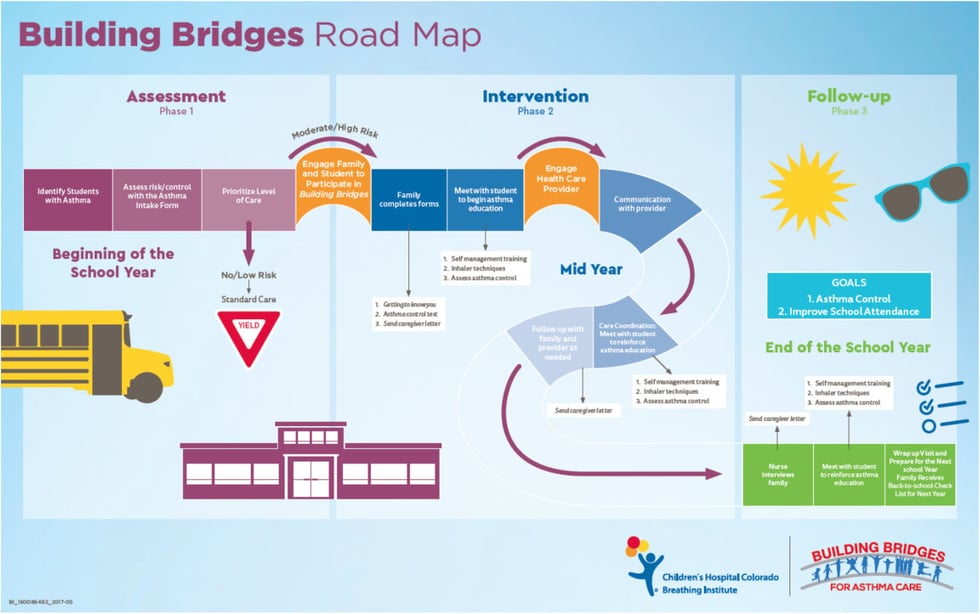
Roadmap for AsthmaCOMP participants
“These asthma counselors are, for the most part, bilingual and from the communities they serve, so they can relate better to students and their families,” adds Szefler. “It takes a certain personality to do it. They are patient, knowledgeable, outgoing, and committed to their community.”
Growth and social determinants of health
“Before I had the terminology,
I was thinking about how the
program could expand.”
As is common for funded projects, the continual reporting and looking at metrics drove Szefler and his team to constantly improve their work. Starting in 2008, and at the end of each funding cycle going forward, the program was renewed and would add five schools to its reach every few years, growing to 41 schools by 2015 within Aurora, Brighton, Denver, Englewood, Mapleton, and Sheridan school districts.
In 2013, Szefler began working at Children’s Hospital Colorado which was looking to expand the program in Aurora, CO. “Before I had the terminology, I was thinking about how the program could expand. I was thinking about dissemination and implementation research,” says Szefler.
As AsthmaCOMP was expanding into Aurora, CDPHE was asking the team to expand into rural communities in the state as well. Szefler and his team began using continuing education programs, in collaboration with the Colorado Department of Education and under the direction of Melanie Gleason, PA, to reach these areas and teach school nurses how to follow the program independently.
“At this time, CDPHE also asked us to address social determinants of health,” says Szefler. “Luckily, one of our members, Dr. Arthur McFarlane from Children's Hospital Colorado's Breathing Institute, is passionate about that and had previously worked at CDPHE. When I moved, he joined us and as we went along, I became more and more aware of the people and talent at ACCORDS.”
"That's where ACCORDS was
extremely valuable in providing
that expertise..."
Szefler’s team began to grow and worked hard to get funding from NIH, something he had been unable to do in the past. “It was almost magical the way it worked out, it was a perfect fit,” says Szefler. “We already had groundwork for the program in five regions in Colorado (Lamar, Cortez/Montezuma, Colorado Springs, Greeley, and Grand Junction). To get the grant was a matter of adding the discipline of dissemination and implementation research. That's where ACCORDS was extremely valuable in providing that expertise through Allison Kempe, MD, MPH, and Russell Glasgow, PhD.”
Amy Huebschmann, MD, MS, FACP, associate professor and implementation scientist for the ACCORDS D&I Science Program, is working as an integral part of Szefler’s team to create a dissemination playbook. The playbook will allow new regions looking to implement the AsthmaCOMP program the opportunity to individualize the program. Szefler hopes that after solidifying this methodology, any school will be able to pick up the playbook, and if they have the motivation and network, put together the resources to support it.
Across its network of 41 schools, schools with the AsthmaCOMP program see a reduction in school absences, parents report being more comfortable with managing their child’s asthma, and a shift from parents first calling their primary care physician after an asthma attack instead of calling the emergency room.
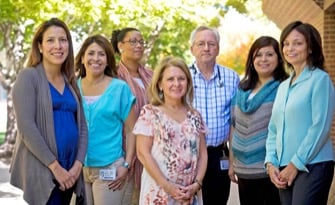
AsthmaCOMP Team |
“We hope to create a sustainable program for asthma in children of these stages,” says Szefler. “That requires standardizing data collection and communication to make the program more efficient. We also want to educate the school nurses, because some are very familiar with asthma some are not. But the overall goal, with time, is to make more and more schools familiar and comfortable with this program so kids can breathe better.”
To learn more, read Szefler’s published articles or visit the AsthmaCOMP site.
